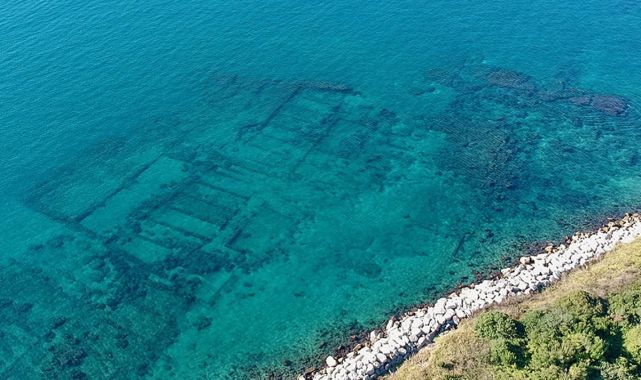Recent archaeological discoveries have revealed the remnants of a temple dating back 2,000 years, belonging to an ancient civilization that has captivated the imaginations of many, especially fans of the Indiana Jones franchise.
This remarkable temple features a rectangular layout and two rooms connected by internal pathways leading to the vicus Lartidianus, an area historically used by foreign traders.
Located off the coast of Puteoli, in modern-day Pozzuoli, this site represents the first known temple built by the Nabataeans outside the Middle East.
The Nabataeans and Their Legacy
The Nabataeans were a nomadic Arabian merchant civilization originating from Jordan, famous for their stunning architectural achievements, such as Al Khazneh in Petra.
This elaborate rock-cut tomb served as a backdrop for the 1989 film Indiana Jones and the Last Crusade.
Researchers noted in the journal Antiquity that the discovery of this Nabataean sanctuary confirms that people from this region were active participants in the commercial landscape of Puteoli.
The temple’s construction was likely made possible by the Nabataeans’ friendly ties with Rome and the relative independence they enjoyed during that time.
Architectural Features and Inscriptions
Both rooms of the temple exhibit Roman architectural styles, complete with marble slabs adorned with Latin inscriptions.
One such inscription reads “Dusari sacrum,” which translates to “consecrated to Dushara,” the primary deity of the ancient Nabataean religion.
This underwater structure lies about 150 feet offshore, submerged beneath layers of volcanic material that accumulated over the centuries.
The area was once a bustling port for Roman ships, facilitating the trade of goods from across the empire.
Discovery and Excavation
This remarkable find occurred in 2023 during an underwater archaeological survey aimed at locating long-lost treasures in the Gulf of Pozzuoli.
Over the past year, the team has been dedicated to excavating the underwater temple further.
Archaeologists believe the temple was constructed during a time when the Nabataeans enjoyed both wealth and autonomy, likely during the reigns of Roman emperors Augustus or Trajan.
The Nabataean Kingdom’s Trade Network
The Nabataean Kingdom existed as an independent entity from the mid-3rd century BC until it was annexed by Rome in 106 AD.
This ancient civilization controlled vital trade routes that transported luxury goods from the Indian Ocean through desert caravans to the Mediterranean, significantly bolstering their relationships with Puteoli.
Within the underwater ruins, archaeologists have identified two distinct rooms, designated Room A and Room B, constructed from locally sourced materials.
Ritualistic Artifacts
Room A houses two white marble altars, one of which once contained sacred stones used in Nabataean worship, arranged within eight rectangular recesses.
The second altar, located on the seafloor, also featured three rectangular recesses.
Room B contained white marble slabs bearing the same Latin inscriptions as those found in Room A.
The Nabataeans practiced a polytheistic religion heavily influenced by Greek and Egyptian cultures, worshiping numerous deities represented by sacred stones placed in altar recesses.
Puteoli: A Historical Port
Founded as a Roman colony in 195 BC, Puteoli emerged as the empire’s primary port for Mediterranean trade, facilitating the transport of everything from wine to textiles.
The Nabataean population, primarily residing in the desert regions of the Arabian Peninsula, established a significant settlement at Pozzuoli, which became a thriving commercial hub.
The Decline of the Nabataeans
At its height around the time of Christ’s birth, the Nabataean Empire extended across the Middle East, encompassing regions that include modern-day Jordan, Israel, Egypt, Syria, and Saudi Arabia.
The dynamic changed when the Romans peacefully annexed Petra, the Nabataean capital, along with the entire kingdom.
Recent excavations in Petra have unveiled a previously unknown tomb containing twelve skeletal remains and intriguing grave goods, including a grail-shaped cup reminiscent of the one from the Indiana Jones movie.
Looking Ahead
Archaeologists are optimistic that further analysis of the human remains and artifacts will provide deeper insights into the lives and practices of the Nabataeans, the ancient Arab people behind the magnificent Al Khazneh.
The temple’s discovery not only sheds light on the Nabataean civilization but also enhances our understanding of trade and cultural exchanges in ancient times.
Mine Crypto. Earn $GOATS while it is free! Click Here!!
Telegram Airdrops: Crypto Giveaway
Join CryptoFiat Giveaway for free USDT giveaways and other opportunities!
